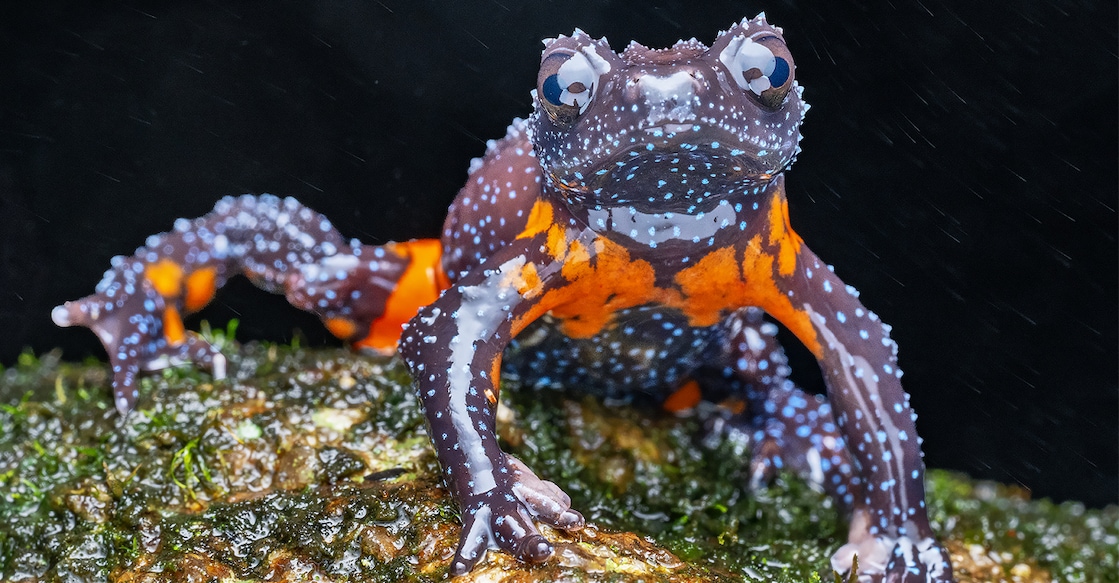Herpetofauna survey reveals 8 unrecorded species in Periyar Tiger Reserve

Mail This Article
The recent survey of reptiles and amphibians in the Periyar Tiger Reserve has uncovered eight species that have never been recorded in the area. The herpetofauna survey, conducted every seven years, was held from June 7 to June 10.
The newly added species include five amphibians -- Darrel’s Chorus Frog (Microhyla darreli), Kerala Skittering Frog (Euphlyctis kerala), and Jaladhara Skittering Frog (Euphlyctis jaladhara) – and three reptile species -- Rashid's Day Gecko (Cnemaspis rashidi) and Meghamalai Dravidogecko (Dravidogecko meghamalaiensis).

One hundred fifty people, including researchers, students, nature observers, and forest guards, participated in the survey. Conducted under the joint initiative of the Kerala Forest Department, Periyar Tiger Reserve, Periyar Tiger Conservation Foundation, and Aranyakam Nature Foundation, the survey identified 67 species of amphibians and around 82 species of reptiles.
“Amphibians and reptiles are among the least studied species in biodiversity surveys. They are often overlooked, and their ecological importance is not fully understood. This herpetofauna survey aims to highlight their critical role in the ecosystem, while raising awareness among people about their significance,” said Lakshmi R, assistant field director of the Periyar Tiger Reserve.

The survey covered all habitat types across the 965-sq km expanse of the protected area. However, the team was unable to access the eastern stretch of the reserve, and the survey was limited to the remaining regions.
More than half of the 67 amphibian species recorded are listed in the International Union for Conservation of Nature's (IUCN) Red List for endangered species. One of the rarest species of the Western Ghats, the Yellow-eyed Reed Frog, was found in four different locations within the Tiger Reserve.

Similarly, the Galaxy Frog (Melanobatrachus indicus), the main species of the Mathikettan Shola National Park, was found at two locations. The tadpoles of the rare Mahabali Frog (Nasikabatrachus sahyadrensis) were documented at six different sites.
"Around 80 per cent of the amphibian species recorded in the survey are endemic to the Western Ghats. That itself is a testimony to the unique amphibian diversity of Periyar," said Sandeep Das, who led the survey. He stressed that amphibians can be considered as the biodiversity indicator of the forest, and such diversity points to a healthy habitat.

"The health of a forest can be determined by observing amphibians and reptiles. They are sensitive to ecological changes and rainfall patterns. If there is a decline in their numbers, then it is a cause for concern," he said.
Sandeep said that of the 82 reptile species identified, 12 were listed as endangered on the IUCN Red List.
Among them are the Cane Turtle (Vijayachelys silvatica), known for its distinctive red eyes, the Travancore Tortoise (Indotestudo travancorica) and the Short-tailed Kukri Snake (Oligodon brevicauda), which is listed as vulnerable.

Sandeep said the survey aims to conserve these rare species of great ecological importance. Although the same research team has been studying these species in Periyar for several years, this is the first time a survey in the tiger reserve has gone beyond simply listing amphibians and reptiles in the protected area.
Unlike previous efforts, this survey focused on documenting their microhabitats and estimating their approximate populations, laying the groundwork for long-term monitoring and research," he said.

